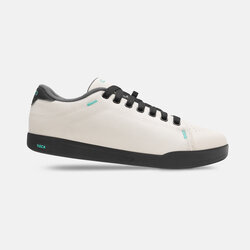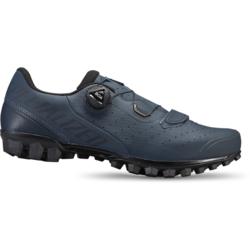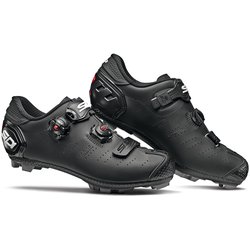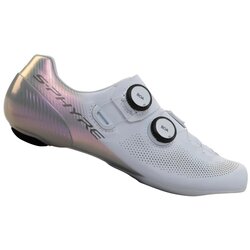Cycling Shoes
Enhance Your Comfort, Safety, and Performance
What do serene gravel rides, intense indoor cycling sessions, and mountain bike shredding have in common? Each of these experiences is enhanced by cycling specific shoes. Forming a key contact point between bike and rider, cycling shoes offer several advantages over traditional footwear. Clipping into pedals maintains correct foot position throughout your pedal stroke. This improves stability and alignment for a safer ride, and engages more muscle groups from the ability to pull up on the pedals. The added stiffness in cycling shoe soles increases power transfer for greater efficiency and helps to reduce fatigue in your foot muscles. Additionally, the use of breathable materials and on-the-fly adjustability give comfort a boost. Whether you’re training indoors, heading for your local trails, or commuting around town, cycling shoes are an essential piece of gear for getting the most out of your ride.
Check Cleat Compatibility
Cycling shoes come in two different cleat mounting interfaces. The cleat mounts on the shoe must match the pedal cleat interface to be compatible. Shoes with a 2-bolt mount (commonly called “SPD”) are standard for mountain, cyclocross, and some entry-level road bike pedals, while shoes that feature a 3-bolt mount are only compatible with road pedals. Some shoes include both cleat mounts for universal compatibility. Whether you already own pedals or are buying shoes and pedals simultaneously, be sure and match the cleat style. Our friendly, knowledgeable staff is here to answer your questions and help you find the right match.
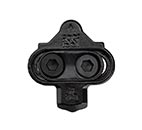
2-bolt or SPD
Primarily for mountain shoes

3-bolt or Look/SPD-SL
Primarily for road shoes
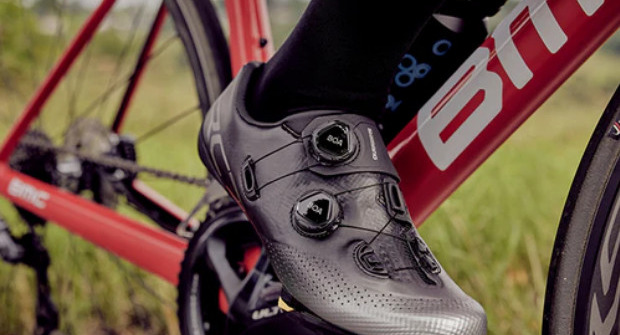
Road Shoes
There’s a road shoe for enthusiasts new to the sport, track sprinters, triathletes, and everyone in-between. Entry-level road shoes are typically roomier and built with more flex that makes them easier to walk in. Shoes designed for performance and racing fit snugly and have stiffer soles made of carbon fiber in order to minimize the loss of power transfer from shoe flex. Road shoes will usually come with a dial adjustment system, laces or sometimes just Velcro. This type of shoe works with a 3-bolt cleat and is often used for Peloton bikes as well as SoulCycle fitness classes.

Triathlon Shoes
These shoes specifically designed for triathletes usually have the same features as a road shoe but with only one or two Velcro straps. The fewer straps are to speed up transitions and allow your foot to dry. They often feature a loop on the back of the heel to give you extra help putting them on and taking them off.

Mountain Shoes
Designed for off-road adventures, mountain shoes feature durable construction and extra tread for hiking over rocks, loose dirt, and wet roots. Shoes with clip-in functionality increase pedaling efficiency and prevent your feet from slipping around on the pedals while covering aggressive terrain. These trend from ultra-lightweight cross-country racing shoes with maximum sole stiffness to trail/enduro styles with grippy tread compounds for better traction on hike-a-bike sections of trail. Alternatively, mountain “flats” don’t clip into the pedals but provide similar stability by pairing a smooth outsole with studded flat pedals. Flat shoes are common for enduro, downhill, and dirt jumping, but some riders simply prefer them over clipping in.

Winter Cycling Shoes
Keep your feet warm and dry to extend your riding season. Winter shoes are designed to keep the cold air and moisture out of your shoes and retain warmth. Many have a waterproof membrane to keep you dry on the wettest days. Most winter shoes are SPD or 2-bolt cleat compatible but some are 3-bolt compatible.
Shop Our Shoe Selection
Find Your Fit
Cycling shoes should fit comfortably without being too snug. Fit often varies between brands, so stop by our shop to try on a few different models (wear the same socks you plan to ride in). Look for shoes with a little extra room in the toe box to allow your feet to naturally swell on longer rides. Ask about wide-last models if you have wider feet, and for a truly personalized fit, consider custom insoles. When shopping online, be sure and reference sizing charts before purchasing.
Mounting cleats onto shoes is a very important step, both for your comfort and to avoid injury. Cleat position affects the alignment of your feet, ankles, knees, and hips. Given the repeated motion of cycling, it’s important to dial them in just right — a challenging task even for experienced cyclists. It’s a good idea to schedule a professional bike fit, which includes fine-tuning the angle and fore-aft position of your cleats, in order to ensure proper alignment. For riders with specific shoe requirements, cleat shims are available in different thicknesses that can be tailored for each shoe.
We’re Here to Help
Ready to get started with your cycling shoe fit and cleat installation?




